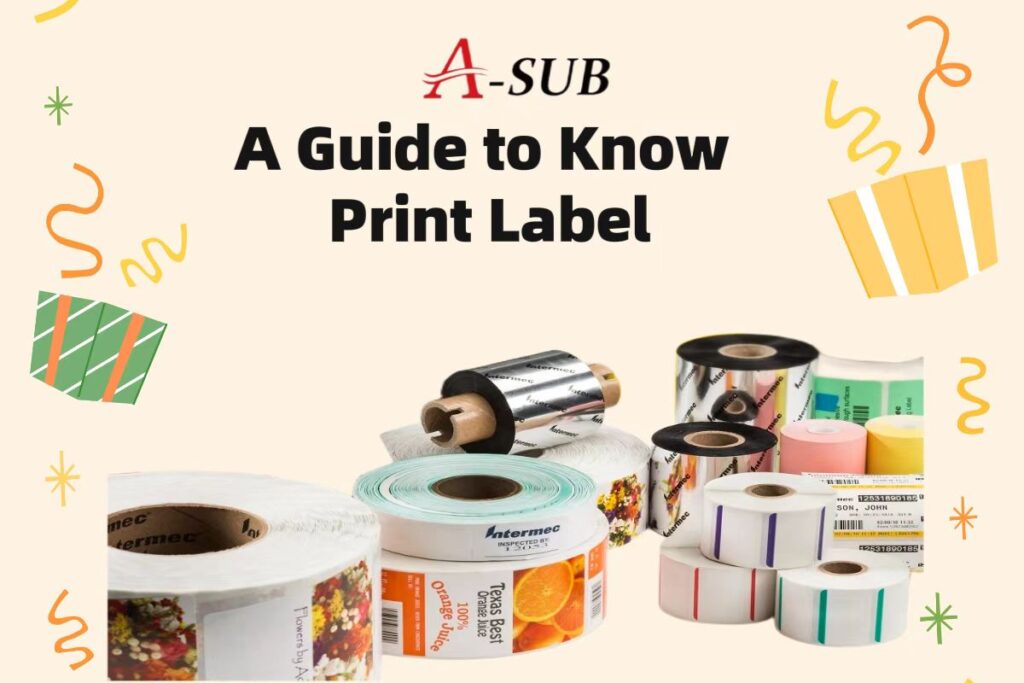Intro
If you wish to print labels for use in your business, it is important to understand the various label types available, the techniques for printing labels, and a few basic key things. So, what are labels? What are labels used for? How to print labels?
Printing Labels refers to the process of creating adhesive labels or tags that can be applied to products, packages, or other items to identify and provide information about them. These labels can contain text, graphics, bar codes, and other information that helps with tracking, inventory management, and product identification. The process of printing labels typically involves using a specialized label printer or a regular printer with label paper to create the desired labels. Labels can be printed in a variety of sizes, colors, and materials, depending on their intended use and the requirements of the application.
In this article, we’ll cover the basics of printing labels, including the different types of labels and tips and tricks for printing labels effectively.
Importance of labels

Labels can be found everywhere in our lives. They are often used to communicate information about a product’s ingredients, nutritional value, expiration date, and potential allergens. Labels also serve as a means of communicating important warnings and safety information, such as potential hazards or side effects.
In addition to their practical uses, labels can also be used to provide consumers with helpful guidance on how to use a product. For example, labels on clothing can provide information on how to care for the garment to extend its life. Labels can also be used to communicate information about a product’s environmental impact, such as whether it is recyclable or made from sustainable materials.
Overall, labels play a critical role in ensuring that consumers have access to essential information about the products they use. They help us make informed decisions about what we buy and how we use it, and they promote transparency and accountability in the marketplace. As such, labels are an important tool for protecting consumer health and safety, promoting sustainability, and ensuring that products are produced and sold in an ethical and responsible manner.
Types of Labels
Product Labels

Product labels are used to provide important information about the product, such as its name, size, ingredients, and directions for use. These labels also include branding elements such as logos and slogans that help promote the product and make it stand out on store shelves. Product labels must comply with regulations set by government agencies, such as the FDA, to ensure consumer safety.
Shipping Labels

Shipping labels are used to identify and track packages in transit. They contain information such as sender and recipient addresses, package weight, and tracking numbers. These labels ensure that the package is delivered to the correct destination and also help reduce delivery errors and delays.
Address Labels
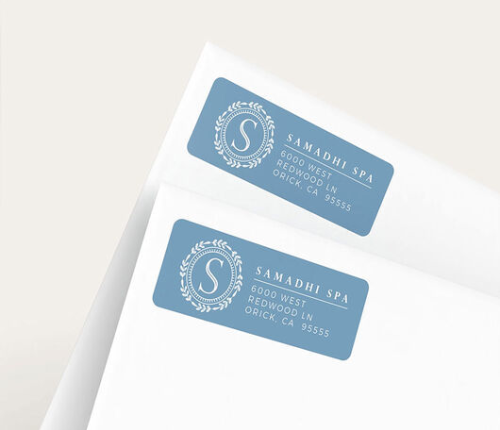
Address labels are used to indicate sender and recipient addresses on envelopes or packages. They include information such as name, street address, city, state, and zip code. These labels help ensure accurate and timely delivery of mail or packages.
Barcode Labels
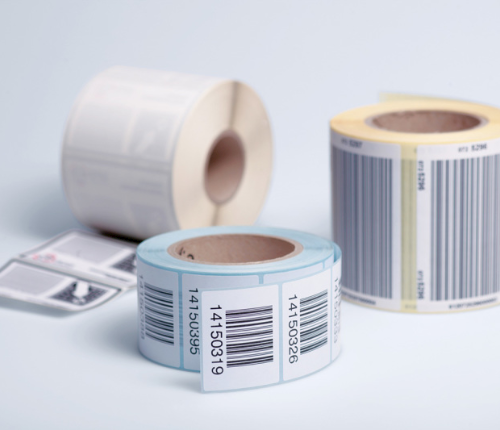
Barcode labels are used to store and retrieve information about products, inventory, or packages. These labels contain a series of parallel lines of varying widths and spaces that are scanned by a barcode reader to retrieve the information. Bar code labels are essential for efficient inventory management and tracking.
Inventory Labels
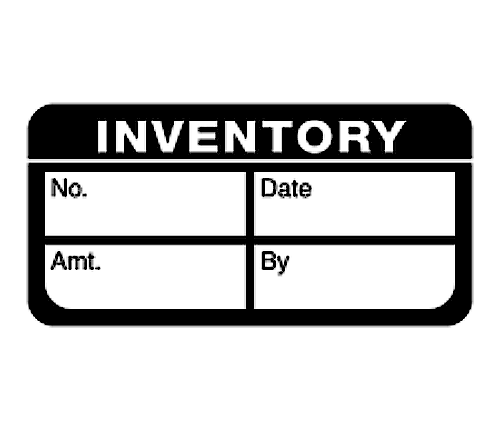
Inventory labels are used to identify and track inventory items in a warehouse or storage facility. These labels contain information such as item name, part number, location, and quantity. Inventory labels help maintain accurate inventory records and reduce errors and out-of-stocks.
Warning Labels
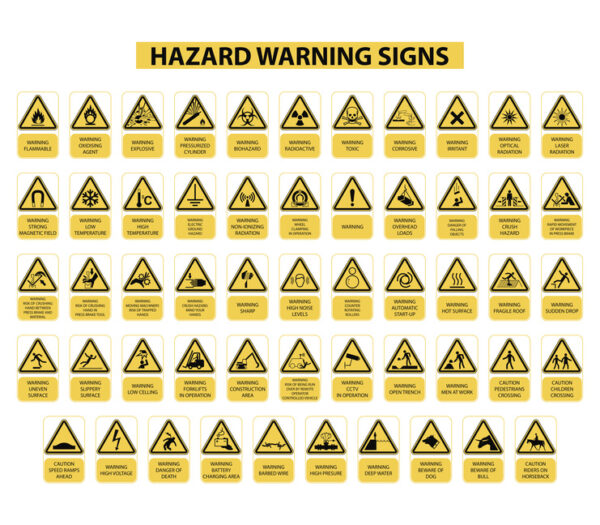
Warning labels are used to provide safety instructions and warnings about potential hazards associated with a product or piece of equipment. These labels contain information such as safety symbols, warnings, and precautions. Warning labels are critical to ensuring safety.
Promotional Labels

Promotional labels are used to advertise a product or offer special discounts or promotions. These labels contain information such as the product name, retail price, and promotional messages. Promotional labels are an effective way to attract customer attention and increase sales.
Name Badge Labels

Name Badge Labels are used to identify people at events or in a professional setting. These labels include the person’s name, title and company name. Name badge labels help promote networking and make it easier for people to connect and remember each other.
CD/DVD Labels
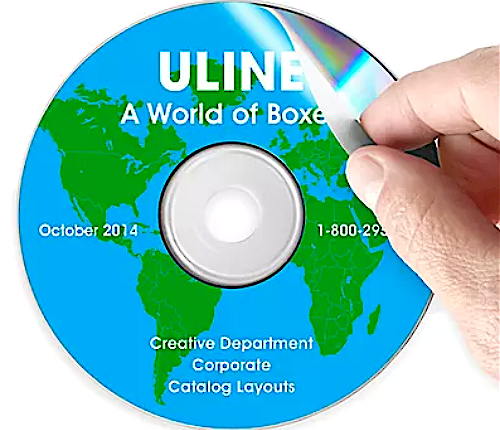
CD/DVD labels are used to identify the contents of a CD or DVD and provide additional information about the disc. These labels contain information such as the disc title, track listing, and artist name. CD/DVD labels help organize and identify multimedia content, making it easier to find and use.
Tips for Printing Labels
Selecting the right label material
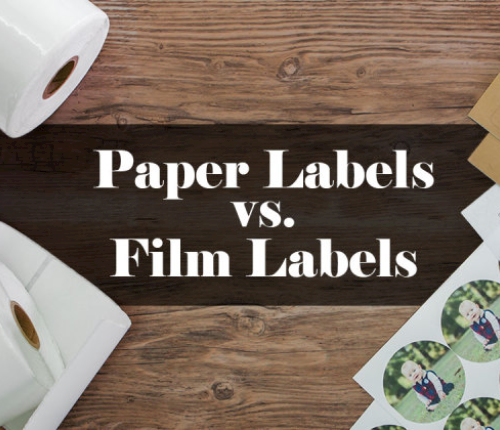
Paper labels, PET labels, and PP labels are three commonly used types of labels in the packaging industry. Here is a detailed explanation of their differences.
Paper labels are the most commonly used labels in the packaging industry. They are made from various types of paper and have a broad range of applications. Paper labels are cost-effective and environmentally friendly, as they are biodegradable and recyclable.
Paper labels are ideal for products that are not exposed to moisture or harsh environmental conditions. They can be easily printed on and are available in different textures and finishes, such as glossy or matte. Paper labels can be easily applied using pressure-sensitive adhesive or glue.
However, paper labels have some limitations. They are not suitable for products that require a label with high durability or resistance to moisture, heat, or chemicals. They can also tear or smudge if exposed to water or other liquids.
PET Labels are durable and suitable for products that require a label with high durability and resistance to moisture, heat, and chemicals. PET labels have excellent print quality and can be produced in various finishes, such as glossy or matte. They are commonly used in the food and beverage industry for products that require a long shelf life.
PET labels are more environmentally friendly than other types of plastic labels, as they are recyclable. They also have a low environmental impact, as they require less energy to produce than other types of plastic labels.
However, PET labels are more expensive than paper labels and are not biodegradable. They also require special equipment and techniques for printing and application.
PP Labels are durable and resistant to moisture, heat, and chemicals. They have a high-quality print finish and are available in different textures and finishes, such as glossy or matte. PP labels are commonly used in the cosmetic and personal care industry for products that require a label with high durability.
PP labels are also environmentally friendly, as they are recyclable and can be easily separated from other plastics during the recycling process. They are also lightweight, which reduces their environmental impact during transportation.
However, PP labels are more expensive than paper labels and require special equipment and techniques for printing and application. They are also not biodegradable and can take a long time to break down in the environment.
In summary, the main differences between paper labels, PET labels, and PP labels are their durability, resistance to moisture and chemicals, print quality, environmental impact, and cost. The choice of label depends on the product’s specific requirements and the manufacturer’s budget and environmental goals.
Choosing the right printer
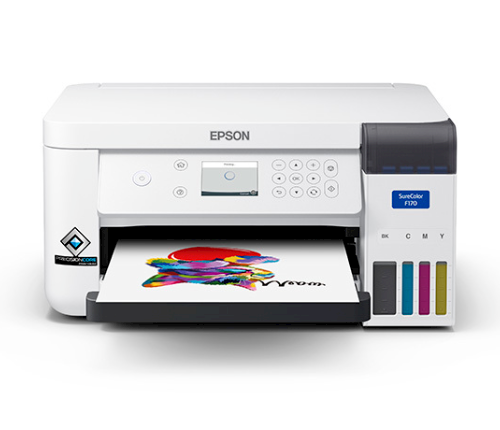
Choosing the right printer is crucial for achieving high-quality labels. There are various types of printers available, including inkjet, laser, and thermal transfer printers. Consider the volume of labels needed, the resolution required, and the label size when choosing a printer. For instance, if you need to print large numbers of labels quickly, a thermal transfer printer may be a better choice than an inkjet printer.
Designing the label
Designing the label involves choosing the font, color scheme, images, and text placement. It is crucial to create a label that is both visually appealing and easy to read. Ensure that the font and font size are easy to read and that the color contrast between the text and background is suitable. Use high-quality images and graphics that are relevant to the label’s purpose.
Using label software:
Label software is an essential tool for designing and printing labels. It provides a user-friendly interface for creating and editing label designs. Label software also allows for the incorporation of barcodes, QR codes, and other features that can enhance the functionality of the label. Use label software to create templates for frequently used label designs to save time and reduce errors.
Testing the Label:
Before printing a large batch of labels, it is important to test the label to ensure that it meets the intended requirements. Test the label by printing a sample and checking for any design or print quality issues. Test the label’s adhesion and durability in the intended environment to ensure it will hold up under the conditions it will face. Make any necessary adjustments before printing a full batch of labels.
Techniques for Printing Labels
Regarding the techniques of printing labels, we need to understand the difference between the following two groups of concept, namely Sheet-fed label printing & Roll-fed label printing, Inkjet label printing & Laser label printing.

A. Sheet-fed label printing is a printing process in which labels are printed on individual sheets that are then cut to size. This method is ideal for short to medium runs and for labels that require high quality graphics and text. Sheet-fed printing is a versatile option for label printing because it can print on a variety of materials, including paper, cardstock, and synthetic materials. It also allows for custom die-cutting and finishing options to create unique label shapes and sizes.
B. Roll-fed label printing is a printing technique in which labels are printed on a continuous roll of label material. This method is ideal for high-volume runs and for labels that require variable information, such as bar codes, serial numbers, or product information. Roll-fed printing is fast and efficient because it eliminates the need to cut and handle individual sheets. It can also print on a wide range of materials, including paper, plastic, and film.
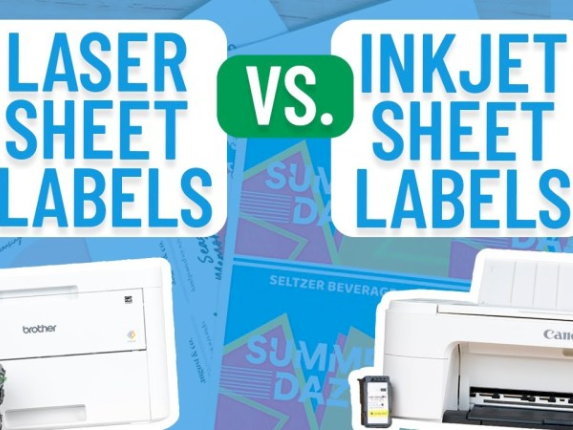
C. Inkjet label printing is a printing technique that uses droplets of ink to create images and text on label material. This method is ideal for printing high-quality labels that require complex graphics and text. Inkjet printing can print on a wide variety of materials, including paper, plastic, and film. It also allows for variable data printing, making it ideal for bar codes, serial numbers, or product information. However, it can be slower than other printing methods and may not be suitable for high-volume printing.
D.Laser label printing is a printing technique that uses a laser beam to create images and text on label material. This method is ideal for printing high-quality labels that require precise text and graphics. Laser printing can print on a wide range of materials, including paper, plastic, and film. It is also fast and efficient, making it suitable for high-volume printing. However, it may not be suitable for printing variable data, such as bar co des or serial numbers.
A-SUB label and operation method
A-sub’s dominant product is water-based inkjet labels, and inkjet technology is also the most recognized and promising technology in the current market.
A-sub has been involved in and researched on the labels of various materials. Both inkjet and laser labels are currently on sale. At the same time, the label surface material involves Paper, PET and PP.
Conclusion
In summary, labels are an important aspect of our daily lives. From the products we buy to the shipping packages we send, labels provide vital information that allows us to identify and track items. There are several types of labels, each with a specific purpose, including product labels, shipping labels, address labels, barcode labels, inventory labels, warning labels, promotional labels, name badge labels, and CD/DVD labels.
There are several factors to consider when printing labels, including selecting the right label material, choosing the right printer, designing the label, using labeling software, and testing the label. The choice of printing technique is also important, with options including sheet-fed printing, roll-fed printing, direct thermal printing, thermal transfer printing, inkjet printing, and laser printing.
By considering these factors, individuals and businesses can ensure that their labels are of high quality and meet their specific needs. With proper labeling, products can stand out in the marketplace, packages can be easily tracked, and inventory can be managed more efficiently.
In today’s fast-paced world, labels are critical to effective communication and organization. As technology continues to advance, we can expect to see more innovation in the labeling industry, making labels even more versatile and valuable.




